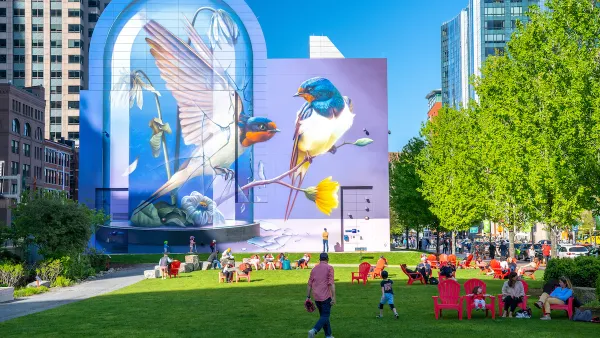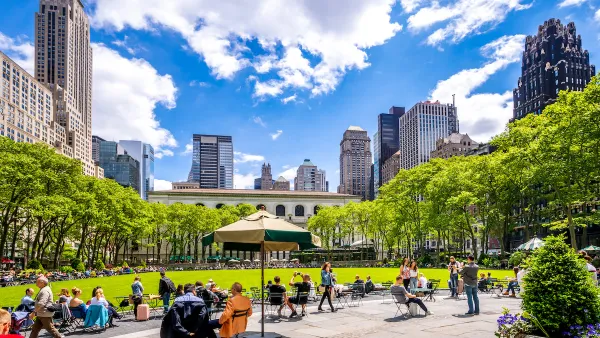I have to admit, listening to Peter Lovenheim talk about his book “In the Neighborhood, The Search for Community on an American Street, One Sleepover at a Time”, spiked my planner’s radar. In his novel, the journalist, quite intentionally, well, the title is self-explanatory isn’t it? It sounded a bit hokey and contrived at first, as did the interview. Lovenheim explained that the only way to truly get to know someone and develop a real sense of intimacy and bond was to sleep in their home and shadow them for the day. But the real story is about the loss of intimacy and comfort among neighbors.
I have to admit, listening to Peter Lovenheim talk about his book "In the Neighborhood, The Search for Community on an American Street, One Sleepover at a Time", spiked my planner's radar. In his novel, the journalist, quite intentionally, well, the title is self-explanatory isn't it? It sounded a bit hokey and contrived at first, as did the interview. Lovenheim explained that the only way to truly get to know someone and develop a real sense of intimacy and bond was to sleep in their home and shadow them for the day. But the real story is about the loss of intimacy and comfort among neighbors. Lovenheim's quest to understand why people who share the same street are unable to share anything else about themselves is actually a reflection of how our neighborhoods are designed and laid out.
A fellow blogger last month wrote that drawing ability was not a prerequisite for being a planner. But understanding spatial relationships certainly is. Lovenheim's neighborhood is a picturesque curving and undulating street, with stately homes which are set far back from the street. The house on the hill design had decreased opportunity for neighbors to casually meet and interact so Lovenheim quite deliberately befriended a handful of people, and matched them together to form a traditional unit of neighbors who could depend on each other through challenging times, what sociologists and planners referto as creating social capital.
What was most interesting to me was that almost all of the neighbors on Lovenheim's street had an intense need to be part of a community and a social network, but they didn't have the facilities to achieve it. One neighbor observed that public spaces have largely been privatized into commercial spaces. Think about the coffee shop, king Starbucks, bookstores. These are little self-contained units with a small entry fee. Another neighbor contrasted American neighborhoods to African tribal villages whose homes are traditionally organized around acentral space out of a primal need for survival. She observed that American neighborhoods are designed for privacy to fuel the prevailing ideology that we can survive alone. And then she suggests the antidote to this landscape of isolation parks! Brilliant.
We obviously can't retrofit our neighborhoods to the tribal village model, or wait for a creative type to take it upon himself to bring the neighbors together one sleepover at a time, but we can introduce more central spaces, parks, playgrounds, community gardens to our neighborhoods.

Analysis: Cybertruck Fatality Rate Far Exceeds That of Ford Pinto
The Tesla Cybertruck was recalled seven times last year.

National Parks Layoffs Will Cause Communities to Lose Billions
Thousands of essential park workers were laid off this week, just before the busy spring break season.

Retro-silient?: America’s First “Eco-burb,” The Woodlands Turns 50
A master-planned community north of Houston offers lessons on green infrastructure and resilient design, but falls short of its founder’s lofty affordability and walkability goals.

Test News Post 1
This is a summary

Analysis: Cybertruck Fatality Rate Far Exceeds That of Ford Pinto
The Tesla Cybertruck was recalled seven times last year.

Test News Headline 46
Test for the image on the front page.
Urban Design for Planners 1: Software Tools
This six-course series explores essential urban design concepts using open source software and equips planners with the tools they need to participate fully in the urban design process.
Planning for Universal Design
Learn the tools for implementing Universal Design in planning regulations.
EMC Planning Group, Inc.
Planetizen
Planetizen
Mpact (formerly Rail~Volution)
Great Falls Development Authority, Inc.
HUDs Office of Policy Development and Research
NYU Wagner Graduate School of Public Service





























